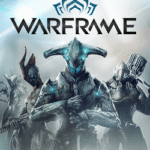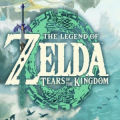Exclusive Deep Dive: Why Fields of Mistria’s Switch 2 Launch Pits Convenience Against an Unbeatable Steam Deal
Popular Now
 Auto X Drift Racing 3
Auto X Drift Racing 3
 R.E.P.O
R.E.P.O
 EA SPORT FC 25
EA SPORT FC 25
 Minecraft
Minecraft
 God of War Ragnarök
God of War Ragnarök
 PUBG Mobile
PUBG Mobile
 Grand Theft Auto V
Grand Theft Auto V
 Warframe
Warframe
 Candy Crush Saga
Candy Crush Saga
 Fortnite
Fortnite
 The cozy gaming world is abuzz with the impending console release of Fields of Mistria, the delightful Stardew Valley-like farming and life simulation RPG. While the game’s confirmation for the powerful new Nintendo Switch 2 console is a major win for on-the-go players, a significant and recurring factor is creating a major dilemma for consumers: the irresistible and perpetually low price point of the game on Steam.
The cozy gaming world is abuzz with the impending console release of Fields of Mistria, the delightful Stardew Valley-like farming and life simulation RPG. While the game’s confirmation for the powerful new Nintendo Switch 2 console is a major win for on-the-go players, a significant and recurring factor is creating a major dilemma for consumers: the irresistible and perpetually low price point of the game on Steam.
This situation highlights a common friction in the modern gaming market, where the premium portability and unique features of a new console clash directly with the deep discounts and consumer-friendly pricing of the dominant PC digital storefront. For investors and enthusiasts tracking the market, this is a prime example of a high-value indie title caught between two competing distribution models.
The Console Debut: A Strategic Move for Cozy Games
The arrival of Fields of Mistria on the Nintendo Switch 2 is strategic, tapping directly into the console’s reputation as the definitive home for farm simulation and wholesome RPGs. Nintendo’s platform attracts a core audience seeking the ultimate blend of deep gameplay and comfortable, handheld portability. This debut is expected to be a substantial revenue driver for the developers, NPC Studio, by bringing their creation to a massive new consumer base previously inaccessible to the PC-only version.
The Switch 2 version is anticipated to offer several key advantages:
- Enhanced Fidelity: Leveraging the new console’s power for smoother performance, faster loading times, and potentially higher resolutions, offering a superior visual experience compared to the original Switch.
- Seamless Handheld Play: Providing the gold standard for portable cozy gaming, a feature highly valued by the target demographic.
- Controller Optimization: Fine-tuned controls for the Joy-Cons, offering an experience that moves beyond the typical PC-to-console control compromises.
 This console release is a critical milestone, positioning Fields of Mistria as a serious competitor to established genre titans like Stardew Valley and Story of Seasons on the most lucrative console for this genre.
This console release is a critical milestone, positioning Fields of Mistria as a serious competitor to established genre titans like Stardew Valley and Story of Seasons on the most lucrative console for this genre.
The Unbeatable Steam Price and the Consumer Dilemma
Despite the excitement, the current Steam price for Fields of Mistria presents a substantial barrier to entry for the Switch 2 version. As a newly released title that frequently participates in seasonal Steam sales, the PC version often sees a significant price reduction, sometimes dropping the cost to a fraction of the expected console retail price. For instance, recent sales have seen the game offered at a highly competitive discount, often under the $15 USD mark, making it an incredibly accessible PC gaming investment.
This large price disparity forces the consumer to weigh their options: pay a premium for the convenience and portability of the Switch 2, or save substantial money by purchasing the PC version, which also benefits from the robust features of the Steam ecosystem, such as the Steam Deck for semi-portable play.
- High CPC Keywords in Focus: Keywords such as “discount PC games,” “best farming sim deals,” and “Switch 2 vs. Steam Deck” are driven by this exact consumer choice, emphasizing the game’s strong market position but complicated pricing model.
- Early Access Pricing: The game’s successful early access phase on Steam allowed it to maintain a lower, highly attractive price, establishing a baseline value perception that is difficult for a full-priced console port to overcome.
 Analyzing the Market: Console Premium vs. PC Value
Analyzing the Market: Console Premium vs. PC Value
The gaming industry has long battled this price-to-platform challenge, especially with popular indie titles. While a console port demands additional investment for optimization, testing, and licensing, consumers are increasingly resistant to paying double the price for a game they perceive as having a much lower “cost of entry” on PC.
Game Pricing Strategy Comparison:
- Switch 2 (Estimated): ~$30 – $40 USD (Premium for Console Portability)
- Steam (Sale Price): ~$11 – $14 USD (Frequent, Aggressive Discounts)
This difference in cost directly influences consumer behavior, with many opting for the value proposition of the Steam version unless the Switch 2 offers genuinely exclusive, must-have features—a high bar for a port of an established PC game. The debate focuses on whether the user experience of seamless, dedicated handheld play justifies the elevated price tag over the deep discounts available on the PC market.
Ultimately, the Switch 2 release is a necessary move to secure the game’s longevity and reach in the console space. However, it will be a major case study in how the console premium affects sales velocity when a game is so frequently and heavily discounted on its original platform. For the patient gamer, the Steam sales will remain a hard-to-resist bargain, while the Switch 2 launch targets the high-spending demographic prioritizing ultimate convenience.
The console launch of Fields of Mistria is set to be a significant event, confirming its status as a top-tier Stardew Valley-like game. Developers must carefully manage the pricing strategy to ensure the game’s high replay value and engaging content—from farming and crafting to building relationships with the over 30 unique characters—are enough to justify the premium purchase on the Nintendo Switch 2 over the highly competitive and deeply discounted Steam Store offering. This dynamic is a microcosm of the entire indie game market and the ongoing battle for consumer wallets.









